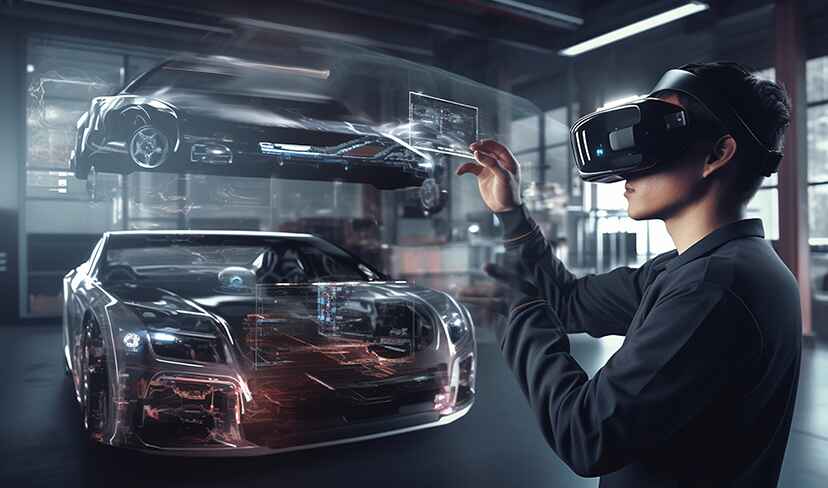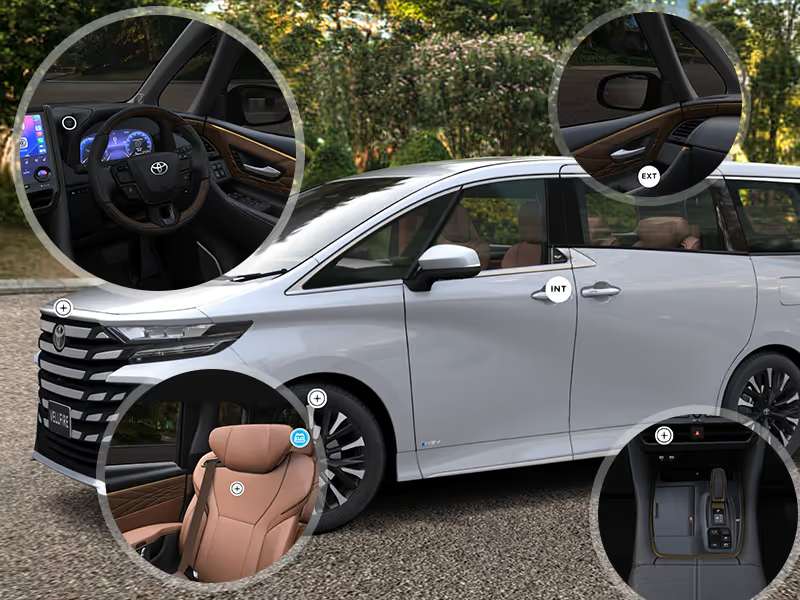Our Clients
Challenges in Automotive Industry
Outdated prototyping methods, fragmented collaboration, and late-stage design errors are major challenges hindering productivity in today’s automotive sector. Advanced 3D visualization is transforming these bottlenecks by enabling immersive design reviews, faster iterations, and seamless cross-location collaboration. By replacing physical mockups, next-gen simulation framework accelerates decision-making and ensures production accuracy.
Another key challenge lies in the skills gap. Traditional training methods struggle to keep pace with rapidly evolving technologies. Immersive workforce training addresses this by offering interactive, risk-free simulations that prepare workers for complex manufacturing tasks, significantly reducing training time and operational errors.

Our Solutions
Concept-to-Prototype
With high-fidelity spatial visualization systems, teams quickly model, test, and refine vehicle designs in immersive 3D, cutting prototyping costs and reducing time-to-market without sacrificing design accuracy.
Immersive Global Team Sync
The spatial insight platform enables seamless real-time collaboration in vehicle design and engineering, improving cross-geography communication, aligning departments efficiently, and preventing misalignments.
Hands-On Workforce Simulation
Through a cognitive immersion learning platform, workers experience real-world automotive tasks in a safe environment, accelerating skill development, reducing onboarding time, and minimizing operational errors.
Precision in Production Planning
Plan factory layouts using virtual walkthroughs to identify bottlenecks early. Juego neXR’s adaptive immersive experience framework optimize operations, improves throughput, and enhances ROI across automotive production lines.
XR-Powered Procedural Engine
Simulate high-risk automotive scenarios safely. Workers master emergency protocols and hazard identification without exposure, building a culture of preparedness and significantly lowering workplace incidents.
Next-Level Buyer Engagement
Let customers explore and customize vehicles virtually. Juego neXR’s deep learning experience system enhances satisfaction, shortens sales cycles, and reduces inventory dependence through interactive, showroom-like experiences.
Impact of Custom Immersion in Automotive
Accelerated Design and Prototyping
Advanced 3D visualization allows manufacturers to create, test, and refine vehicle prototypes virtually, reducing time and cost. Simulations of autonomous systems enhance safety validation before physical prototypes are built, streamlining the development of cutting-edge automotive technologies in a controlled, low-risk environment.
Enhanced Training and Workforce Efficiency
Immersive skills training provides immersive, hands-on learning for technicians, boosting confidence and accuracy. It prepares workers to handle real-world manufacturing tasks safely, reduces operational errors, and enhances overall productivity by delivering realistic, scenario-based training that accelerates skills acquisition and job readiness.
Improved Collaboration and Decision-Making
By incorporating spatial simulation training systems, companies can foster better cross-functional collaboration. Teams across locations gain a unified view of design concepts, enabling faster alignment, reducing misinterpretations, and streamlining the decision-making process throughout vehicle development.
Our Case Study

Toyota: Car Walkthrough VR Simulation
Frequently Asked Questions
Real-time interactive simulation transforms automotive operations by enabling designers and engineers to work with detailed 3D models for rapid prototyping and real-time modifications. Immersive workforce training enhances technician training through hands-on practice in complex repair procedures within safe, controlled environments. Virtual showrooms allow customers to explore vehicle features interactively, enriching the buying journey. These innovations streamline operations and boost overall efficiency across the automotive sector.
Advanced 3D visualization enhances enterprise operations by streamlining design reviews, improving remote collaboration, and accelerating decision-making across departments. Teams can interact with full-scale 3D vehicle models, conduct virtual walkthroughs, and identify design issues early in development cycles. High-fidelity spatial visualization systems enable effective cross-functional collaboration between geographically dispersed teams, reducing travel costs and timelines. These immersive simulations support better communication, faster approvals, and more efficient product development workflows.
Cognitive immersion learning platform offers hands-on learning experiences for technicians, allowing them to practice complex repair and maintenance tasks in virtual environments. This approach reduces training costs, minimizes errors, and accelerates skill acquisition without requiring physical prototypes. Adaptive immersive experience framework enables remote assistance, where experts guide technicians in real-time during repairs, enhancing service efficiency. Integrating experiential learning solutions ensures automotive companies maintain a more competent and prepared workforce.
Spatial insight platform serves multiple roles, from enhancing design and prototyping processes to improving training and customer engagement. Designers use advanced 3D visualization to create and test vehicle models virtually, enabling rapid iterations and reduced development costs. Training programs leverage XR-powered procedural simulation engine to provide technicians with realistic simulations that improve skill levels and reduce errors. Deep learning experience system offers interactive showrooms where customers explore vehicle features and configurations, enhancing their purchasing experience.
Our simulations use modular software architecture, making it easy to add new vehicles, scenarios, or features. Regular updates ensure compatibility with current hardware and tools, and user feedback drives ongoing improvements.
We offer full support during deployment, integration with existing systems, user onboarding, and long-term maintenance. Custom development, troubleshooting, and updates are also available to keep simulations running smoothly and effectively.
Our Offices

India
Bangalore
GR Grand Plaza, 2nd Floor, JP Nagar, 6th Phase, Bangalore – 560 078

KSA
Jeddah
St Idris Square, 4036 Helmi Koutbi, Al Zahra, Jeddah 23425, Saudi Arabia
Follow Us On:
© 2025 Juego neXR. All Rights Reserved.















